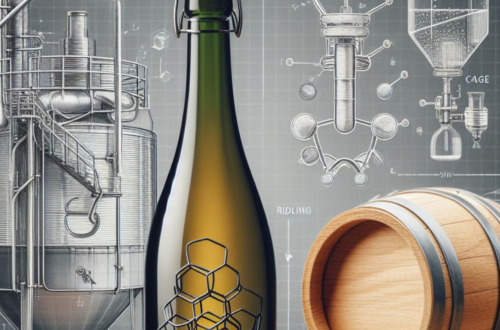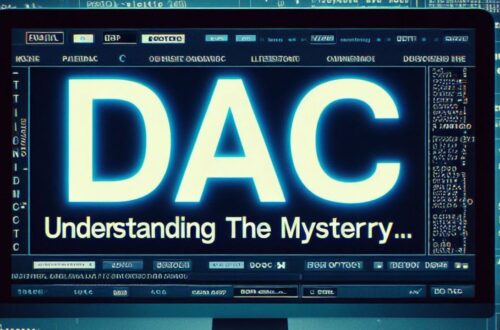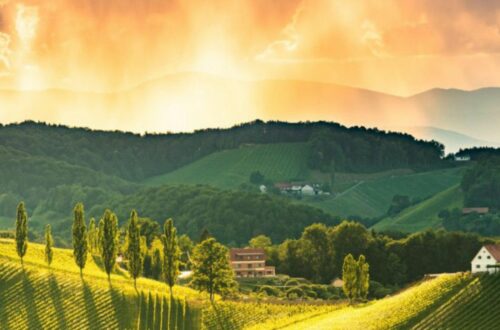Austria
- A Quick Guide to Austria’s Best Wine Regions
- The famous Wachau wine
- The less famous but equally delicious red wines of Burgenland
- Your Beginner's Guide to Grüner Veltliner from Wachau
- Your Beginner's Guide to Blaufränkisch from Burgenland
- Where to buy Austrian wine online
-
Is Sekt the same as Prosecco?
When it comes to sparkling wines, there is a vast array of options to choose from… and among these renowned sparkling wines, Sekt and Prosecco! So whether you’re a wine connoisseur or simply intrigued by the allure of bubbles, let’s raise our glasses and embark on this sparkling exploration to answer the question: Is Sekt the same as Prosecco? Sure!…
-
What is the difference between Sekt and Champagne?
When it comes to sparkling wines, two names that often come to mind are Sekt and Champagne. While they both offer effervescence and celebratory charm, there are distinct differences between the two. From their regions of origin to the grapes used and production methods employed, Sekt and Champagne each have their own unique characteristics. Understanding these differences can help wine…
-
What is the Sekt method?
In Austria, the production of “Sekt” encompasses various methods, including both the traditional and Charmat methods. There are two distinct categories of “Sekt” available: “Österreichischer Sekt” and “Sekt g.U.” “Österreichischer Sekt” lacks a specific geographical indication, whereas “Sekt g.U.” holds a controlled designation of origin. “Sekt g.U.” carries a higher status and must adhere to specific production and quality requirements.…
-
What type of wine is Sekt?
According to DWDS (German online dictionnary, sort of), “Sekt” is a term used to describe sparkling wine. Its origin can be traced back to the French word “sec,” meaning “dry” or “tart” wine, derived from the Latin word “siccus,” which means “dry.” Initially, “Sekt” referred to wines made from dried grapes in Spain and the Canary Islands (as seen in the…
-
What grape is Sekt made from?
Sekt, a sparkling wine widely enjoyed in Germany and other parts of Europe, is made from a variety of grape types carefully selected for for the production of Qualitätswein. There are 40 of them, 26 are white and 14 are red. The choice of grape varieties plays a crucial role in defining the flavor, aroma, and overall character of Sekt.…
-
What does DAC stand for in wine?
Let’s explore the DAC world of Austria! The Qualitätswein designation in Austria authorizes 40 authorized grape varieties and can originate from nine generic wine regions (what I called areas in the most famous wine regions of Austria) named after administrative regions, as well as specific wine regions within these areas. The main generic wine regions (or areas) are Niederösterreich (Lower…
-
What are the major quality levels of Austrian wine?
A very important characteristic (although not the only one) for distinguishing various levels of quality is the natural sugar content of grapes at harvest. This natural sugar content is referred to as the ‘must density’ of grapes or unfermented must. DEFINITION : The terms “grape must” and “partially fermented grape must (or Sturm)” are defined by European Union legislation and…
-
What is Bergland in Austria?
Like you may have read earlier, Austria is mainly covered by the Alps. This explains why the most famous wine regions in Austria are located at the east of the country. However, just like in Jurassic Park 2 “Life will always find a way”, so does wine! Take a sneak peak in France and the Alps : there is produced…
-
Vienna wines
Move over Bordeaux, Chianti, and Napa Valley because Vienna takes the crown as the ultimate winemaking capital of the world! Surprising, right? According to Fritz Weininger, one of Vienna’s esteemed winemakers, “In Vienna, we don’t just drink wine, we devour it!” The roots of Vienna’s vineyards stretch back to the 12th century, possibly even earlier when everyone from the Celts…
-
Südsteiermark wines
Steiermark, also referred to as Styria, is an enchanting wine region in Austria, featuring three separate wine zones: Vulkanland, Weststeiermark, and Südsteiermark. Steiermark has a long and illustrious viticulture heritage that goes back to ancient times. In 2018, all three wine zones achieved the DAC designation, establishing the characteristic white wines and emphasizing the significance of indigenous grape varieties. Forget…












